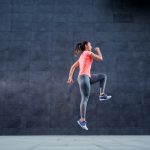Pilates Principles: DIY Home Routines for Core Strength and Flexibility
Boosting Posture and Balance
Improving posture and balance through Pilates involves targeted exercises. These exercises enhance core stability and promote alignment, key factors in achieving both posture and balance improvement.
Postural Improvement through Pilates
Pilates emphasizes core engagement to stabilize the spine, crucial for maintaining proper posture. Exercises such as the Plank and Spine Stretch are effective in aligning the spine and reducing the strain on back muscles. By regularly practicing these, individuals can experience reduced back pain and improved posture. The focus is on developing a strong foundation that supports the body in an upright position. Additionally, controlled breathing aids in maintaining focus and core activation, contributing to sustained postural improvements over time.
Balance Exercises within Routines
Balance is integral to Pilates, focusing on exercises that challenge stability. Single-leg exercises, such as the Single Leg Stretch and Standing Leg Reach, improve balance by engaging the core and stabilizing muscles. These movements are designed to enhance body awareness and coordination. Strengthening these areas aids in preventing falls and supports overall bodily coordination. Pilates routines incorporate progressive challenges to ensure continuous development of balance skills. Practicing consistently can lead to improved balance and enhanced functional movement in daily life, contributing significantly to overall well-being.
Enhancing Coordination and Agility
Pilates principles integrate a focus on core stability and flexibility, which inherently improves coordination and agility. These elements are crucial for both daily activities and athletic performance, making Pilates a versatile practice for enhancing overall physical function.
Coordination in Everyday Movements
Coordination involves the ability to move different parts of the body smoothly and efficiently. Pilates exercises contribute to this by targeting muscles that support balance and stability. Regular practice encourages the synchronization of movements, which is essential in daily routines like walking, lifting, and even standing.
Through exercises like the Pilates roll-up or the Hundred, practitioners engage in controlled movements. This control enhances body awareness, enabling individuals to perform everyday tasks with greater ease and fewer errors. Increased coordination can reduce the risk of accidents and injuries by promoting stable and fluid movements.
Pilates for Athletic Performance
Pilates supports athletic performance by enhancing agility and fine-tuning coordination. Athletes rely on swift, precise movements, and core-focused exercises help them build a foundation for such actions. Exercises like the Corkscrew or Double Leg Stretch are particularly effective in improving agility by strengthening the core and lower body.
Improved coordination and cross-body movements foster better reflexes and agility. This not only aids athletes in reacting to dynamic situations but also augments their training by introducing versatile challenges. The balanced development of muscles ensures that athletes perform optimally while minimizing the strain and risk of injury.
Designing a Home Pilates Routine
Pilates at home can significantly enhance core strength and flexibility. It involves creating a balanced workout plan and incorporating various difficulty levels to support your fitness journey.
Creating a Balanced Workout Plan
A comprehensive Pilates routine requires attention to several elements: strength, endurance, and flexibility. It should integrate a mix of exercises catering to all these aspects. For example, exercises like the Plank promote core strength, while movements such as the Mermaid stretch enhance flexibility.
Planning the routine to cover all major muscle groups over the week is essential. This could mean scheduling Pilates sessions three to four times a week, ensuring a variety of exercises. Including rest days supports muscle recovery and prevents overexertion.
A well-rounded Pilates session should also vary the intensity of workouts. Start with low-impact exercises and gradually increase intensity to build endurance. The routine might begin with warm-ups, progress to core-specific movements, and conclude with stretches to improve flexibility.



